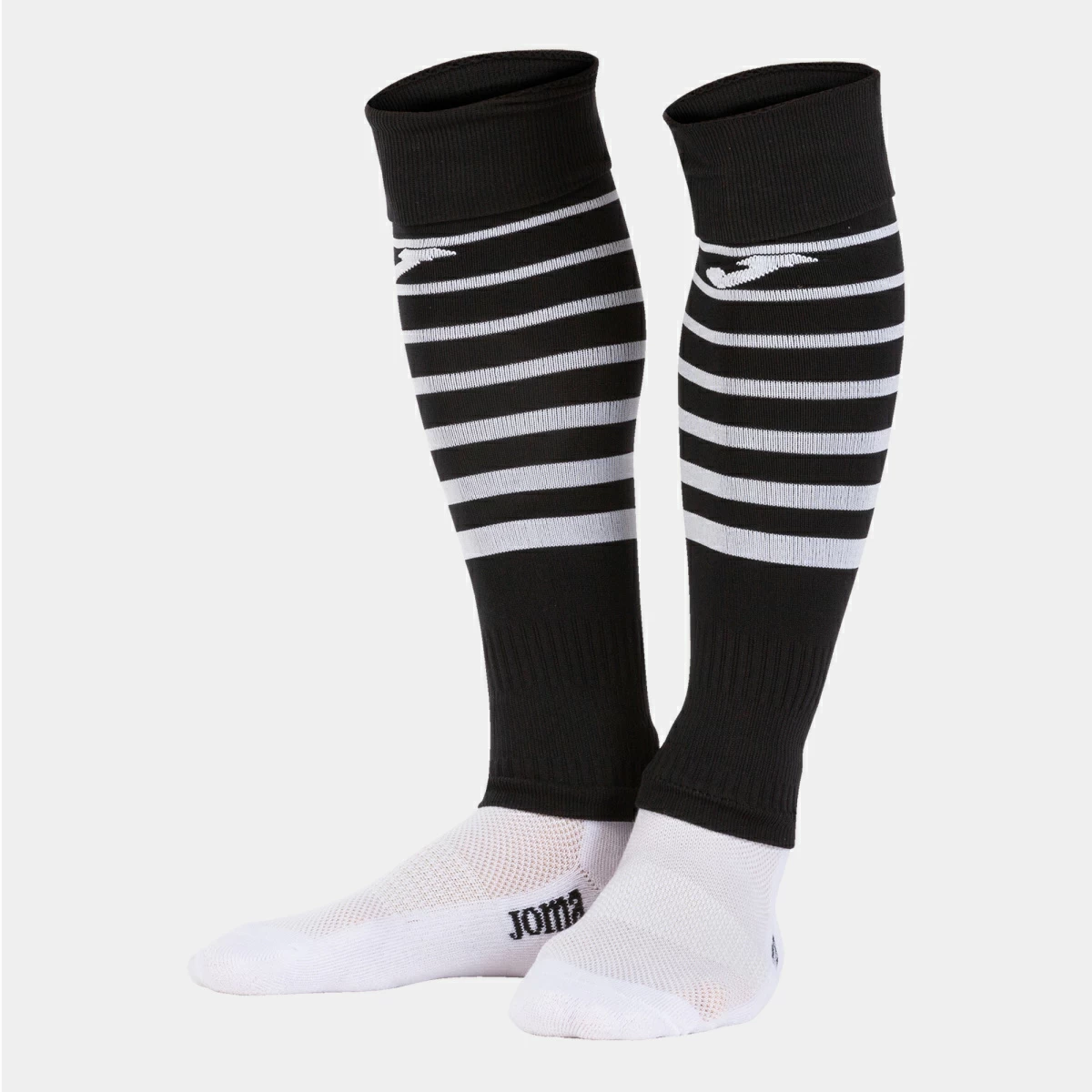Football sleeve socks have become essential to the modern game, providing functional and aesthetic functions. These customised socks, which players wear to cover their legs, have significantly evolved, improving performance, protection, and style on the field. This article examines football sleeve socks’ history, design, benefits, and advancements and their impact on the sport and players.
Table of Contents
Origins and Evolution
Football sleeve socks had their roots in the game’s early days when players wore simple stockings to cover their legs. The necessity for specific socks grew as the sport evolved and player safety became a priority. Manufacturers began making socks with incorporated shin guards in the early twentieth century, giving additional protection from kicks and collisions.
Football sleeve socks have evolved significantly in terms of materials, design, and technology over time. Cotton socks gave way to synthetic fibres like nylon and polyester, which provided superior durability, moisture-wicking characteristics, and a better fit. These developments allowed athletes to concentrate on their game without being bothered by sweat-soaked socks.
Functional Benefits
Football sleeve socks provide several significant functional advantages to athletes. They protect the shins and calves, lowering the chance of injury from tackles and errant kicks. Modern sleeve socks frequently have built-in padding or slots for removable shin guards, which improves player safety.
Second, these socks provide compression support, which improves blood circulation and reduces muscle weariness. Compression technology promotes muscle healing and prevents strains and cramps during games or training sessions. The snug fit of sleeve socks also helps with proprioception, increasing players’ awareness of their body motions on the field.
Furthermore, football sleeve socks protect players’ skin from hard playing surfaces as a barrier against turf burns, scratches, and abrasions. The length of the socks extends beyond the reach of the football boot, serving as a barrier against potential injuries.
Style and Customization
Football sleeve socks have become a canvas for players to show their flair, uniqueness, and functional merits. Players can tailor their socks to make a fashion statement on the field, from displaying team colours to incorporating distinctive patterns. Many professional clubs and national teams now provide personalised sleeve socks, frequently imprinted with club crests, logos, or player names and numbers.
Manufacturers offer various colour combinations, patterns, and fabric textures, so the design choices are limitless. Some businesses have even cooperated with well-known fashion designers to transform football sleeve socks into fashionable accessories worn on and off the field.
Furthermore, sleeve socks have become popular among fans who want to look like their favourite players or teams. Retailers sell replica versions of professional clubs’ sleeve socks, allowing fans to show their support while benefiting from the socks’ functional benefits.
Innovations and Future Trends
Football sleeve socks have come a long way in recent years, and the future holds even more exciting opportunities for innovation. As technology advances, manufacturers look for ways to improve these vital items’ performance, comfort, and functionality. Let’s have a look at some possible developments and future trends in football sleeve socks:
Sensor Integration:
Sensor integration within football sleeve socks is an essential area of innovation. These sensors can capture information about a player’s distance travelled, speed, acceleration, and heart rate. The knowledge acquired can provide the following:
- Significant insights into players’ levels of physical exertion.
- Assisting coaches and trainers in optimising training tactics.
- Monitoring player fitness.
- Designing individualised training programs.
Sensor integration can also help to avoid injuries by recognizing potential hazards and tracking recovery progress.
Smart Fabrics:
Innovative fabric development has enormous promise for football sleeve socks. Smart textiles can adjust temperature and moisture levels, providing athletes with maximum comfort throughout matches and training sessions. These materials can adapt to changing climatic circumstances, changing their characteristics to provide cooling in hot weather and insulation in cold weather. Bright fabrics can also include antibacterial qualities, which reduce the risk of odour and microbiological growth, improve hygiene, and extend the lifespan of the socks.
Impact Absorption and Energy Return:
Material and design innovations can focus on improving football sleeve socks’ impact absorption and energy return capabilities. Advanced cushioning technologies can be included in certain parts of the socks, such as the shin and ankle, to absorb and distribute impact pressures, minimising the risk of injury. Furthermore, materials with energy-returning qualities can create a spring-like effect, allowing players to generate more power and efficiency in their movements.
Biomechanical Analysis and Customization:
Motion capture and biomechanical analysis technology advancements can transform football sleeve sock design and customization. Manufacturers may adapt the fit, compression levels, and support of the socks to individual players’ biomechanics through a comprehensive analysis of their motions, optimising performance and lowering the risk of injury. This level of customization can provide a personalised and accurate fit to each player’s specific demands and preferences.
Sustainability and Eco-Friendly Materials:
As environmental concerns develop, there is a growing tendency in several industries, including sportswear, toward using sustainable and eco-friendly materials. Football sleeve socks can be constructed from recycled materials such as recycled polyester to lessen environmental impact. Furthermore, enterprises may investigate new sustainable manufacturing practices that reduce waste and employ environmentally friendly production techniques.
Augmented Reality (AR) and Enhanced Fan Engagement:
As augmented reality (AR) technology advances, football sleeve socks can become interactive platforms for fan involvement. By incorporating AR capabilities into the socks, fans may scan them with smartphones or AR devices to access unique material, player data, or virtual experiences. This technology can strengthen the bond between players, teams, and fans by creating an immersive and interactive fan experience.
Conclusion
Football sleeve socks have evolved from humble beginnings into necessary accessories that blend practicality and style. Thanks to their protective benefits and customization opportunities, these socks have become essential in football. We should expect future developments in football sleeve socks as technology and design evolve, boosting player performance, safety, and aesthetics.





